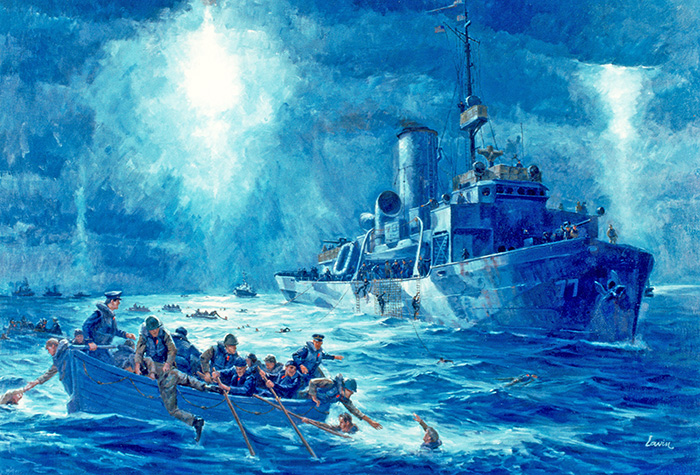
THE LEGACY OF ‘THE FOUR CHAPLAINS’
NEWARK — Eighty years ago, pandemonium seized the crew and passengers of the SS Dorchester when a German torpedo blew a hole in the troop ship as it carried 900 men and four U.S. Army chaplains.
The Dorchester, a former luxury coastal steamship, had launched on Jan. 23, 1943, from Pier 11 on Staten Island with civilian defense workers and service members, including soldiers, sailors, and merchant seamen — all destined for U.S. military bases in Greenland.
But a German U-boat attacked the Dorchester on Feb. 3, 1943, about 150 miles from the ship’s destination, forcing a chaotic evacuation.
Without hesitation, a priest — Father John Washington, a native of Newark — a rabbi, and two Protestant ministers gave up their lives by shedding their own life jackets so that other men might use them to survive.
Father Joe Mancini, pastor of St. Stephen’s Parish in Kearny, New Jersey, where Father Washington served before joining the Army, said it’s a story everyone should know.
“Here are these four guys who didn’t know each other until they got to chaplains school,” Father Mancini said. “And they became friends.”
That kind of interaction between people of different faiths was not that common in the 1940s.
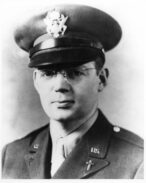
Father Washington, who was 34 years old when he died, was born in Newark. While serving at St. Stephen’s Parish, he was appreciated for his youth ministry, not just for the parish kids but for others in the surrounding neighborhood. He would invite any kid, Catholic or not, to a parish dance.
Rev. George Fox, 42, from Lewistown, Pennsylvania, was the oldest of the four chaplains.
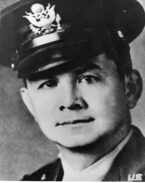
He became an itinerant Methodist minister who preached in the Midwest and along the East Coast. Unlike the other Dorchester chaplains, he’d already had combat experience, having served as a teen soldier in World War I.
As an ambulance driver, he rescued numerous wounded troops and earned the Distinguished Service Cross, the Silver Star, and the Purple Heart. He was married with a teenage son and daughter.
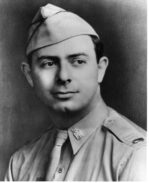
Rabbi Alexander Goode, 31, was born in Brooklyn but raised in Washington, D.C.
As the Dorchester sank, he stopped a man from returning below deck because he’d forgotten his gloves.
The rabbi gave him his own gloves and assured him that he had another pair — even though he did not. He was married with a baby daughter.
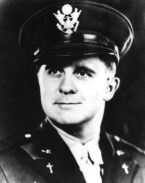
Rev. Clark Poling, 32, was a minister in the Reformed Church of America who came from Columbus, Ohio.
He, too, was married with a son and daughter, but the little girl was born three months after his death.
Each received a commission to the rank of first lieutenant.
The four clergymen met at a chaplain training program held at Harvard University. And despite theological distrust among denominations that was common in the U.S. at the time, they became friends.
Their friendship flourished aboard the Dorchester, where they forged a commitment to interfaith cooperation.
For example, during the voyage, Rabbi Goode wanted to hold Sabbath services in a room near the kitchen. But standing in his way was a cook conducting a craps game — that is until Rev. Poling intervened and convinced the cook to wait until after the service.
The chaplains all had remarkable singing voices, and they harmonized well together.
They performed at an impromptu talent show held to ease ship-wide tension as the Dorchester entered waters known for being patrolled by German U-boats.
The fears became reality shortly after midnight on Feb. 3 when a German submarine, the U-223, launched the torpedo that penetrated the Dorchester beneath the waterline.
Dozens died immediately from the blast, which knocked out the ship’s electrical system, killing the lights. Panicked survivors reached the deck after pushing through the darkness, smoke, and sudden rush of flooding seawater.
Up top, they found the “Four Chaplains,” as they are now famously known, handing out life jackets — until there were none.
“You have to imagine the chaos,” said Marcia McManus, director of the U.S. Army Chaplain Corps Museum at Fort Jackson, South Carolina, a modern-day training base for chaplains. “There was only one shot fired, and it took the Dorchester about 20 to 30 minutes to sink.
“They gave up their life jackets to four other soldiers, but, of course, in the North Atlantic, in February, if you didn’t have a life preserver, you weren’t going to survive.” Of the 904 men aboard the Dorchester, 674 died.
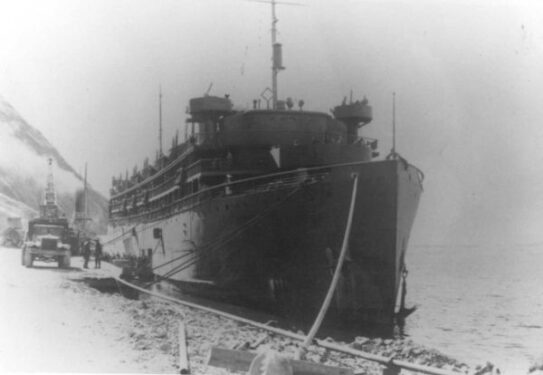
Coast Guard cutters responded to the Dorchester’s call for help and found hundreds of men floating in the water with small beacon lights flashing from their life jackets. Some survivors later remarked that the red beacons, bobbing up and down, reminded them of Christmas lights.
Still, by the time the cutters arrived, most of the floating men had succumbed to hypothermia in the dangerously cold water.
Seconds before the Dorchester’s final plunge, survivors in lifeboats saw the Four Chaplains — arms linked and braced against the slanting deck, offering prayers and singing hymns.
They disappeared with the ship, never to be seen again.
They were not the only military chaplains to die at sea during World War II.
Four days later, another German torpedo sank the USS Henry R. Mallory, bound for Iceland, this time with five chaplains lost.
Yet, the Dorchester’s Four Chaplains became widely known for their interreligious service aboard the ship. Survivors’ eyewitness accounts of the chaplains going down with the ship, arm in arm, enthralled a nation that had been divided by staunch theological arguments.
“They really are the major story in the Army chaplain corps,” McManus said. “It’s the ultimate sacrifice. They gave up their lives and went down with the ship.”
St. Stephen’s Parish has a memorial Mass for the chaplains each year on the first weekend in February. This year it’s on Feb. 5 at the church.
Over the years, as many as 150 World War II-era veterans have attended the Mass, according to Father Mancini, but their numbers grow smaller each year.
Still, he noted, the parish’s Scout troop promotes and attends the Mass, which draws other Scouts from throughout the United States.
Father Mancini said it’s important for the parish to keep the story going.
“These chaplains did not have one particular moment when they said, ‘Hey, let’s be heroes.’ It was their way of life,” Father Mancini said. “It was their connections to their faith, their relationship with God, that really formed their character and their virtue.
“That’s what we need to be striving for — that holiness.
He added that it’s important to keep their heroism and faith front and center.
“We may never be in their situation,” he said, “but we don’t want to forget what they did.”

